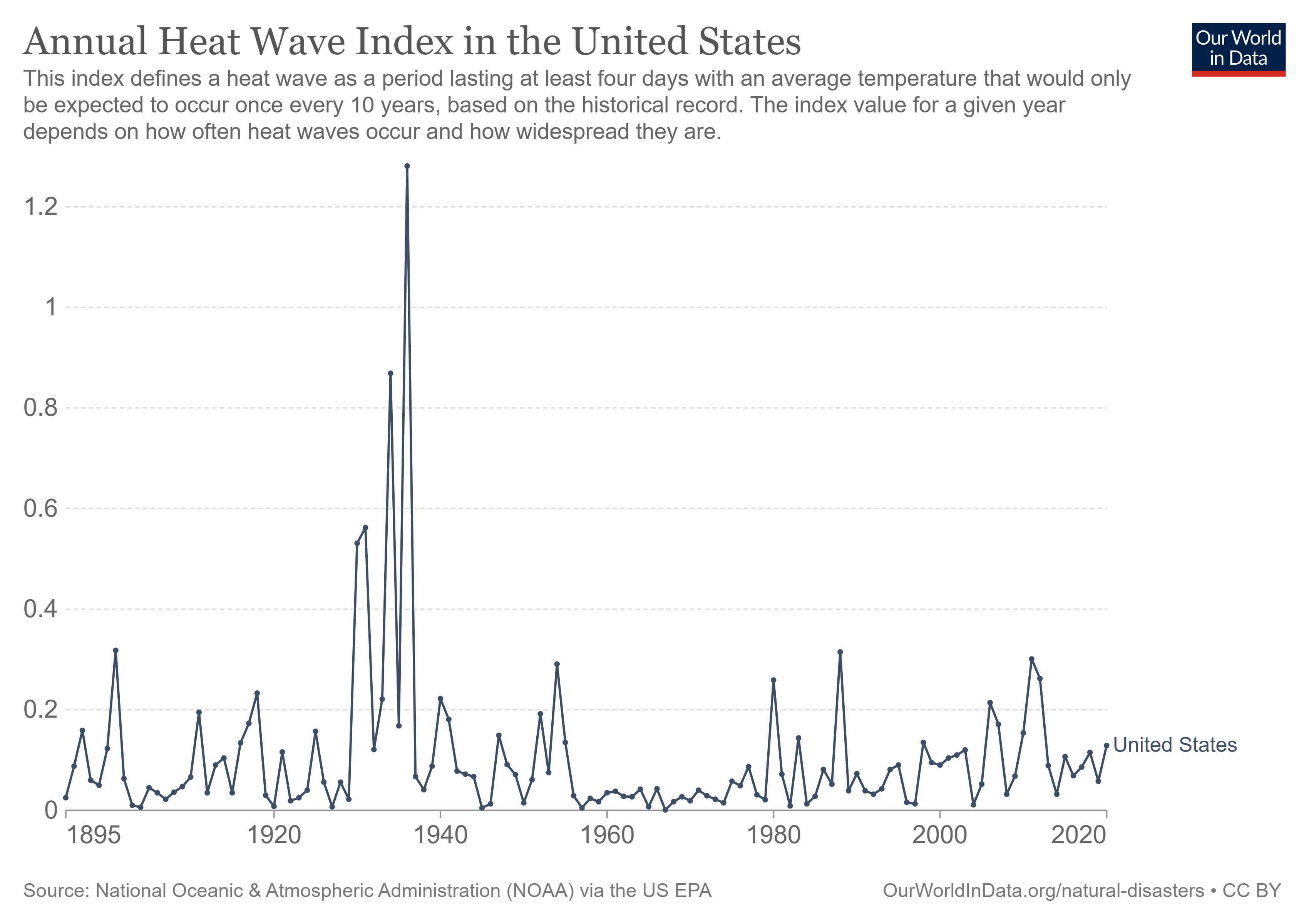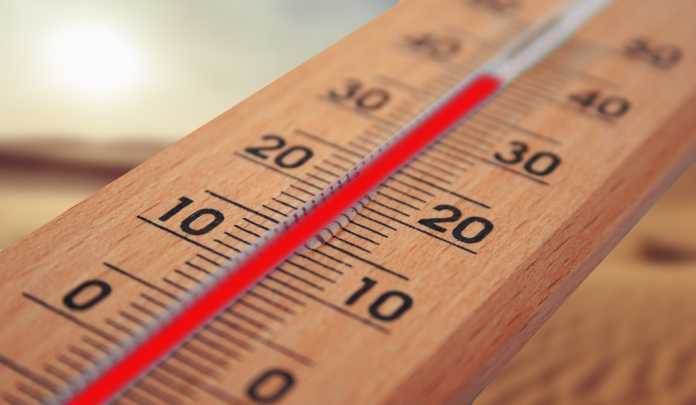Citing research from the group World Weather Attribution, New Scientist, Reuters, The Guardian, and other media outlets have published stories claiming climate change is making heatwaves and other extreme weather events more severe. Data falsifies this claim. Attribution studies based on computer model simulations are no replacement for data. The best evidence suggest that the increasing use of attribution studies to make alarming claims about climate change are instances of confirmation bias, in which scientists ignore contrary evidence and only reference data or, more often, model projections that confirm their preconceptions about effects of climate change on weather.
Both Reuters and New Scientist claim that every heatwave observed globally is being made worse by climate change. The most extreme claim is made in the New Scientist article, “Every heatwave occurring today is more intense due to climate change,” in which writer Adam Vaughan claims that modelling isn’t even necessary anymore because the theory that heatwaves are mostly caused by climate change is just so firm. Vaughn eschews referencing data to back his claim of certainty, instead basing his unscientific assertion on a study from researchers at World Weather Attribution. The lead author of the study, Friederike Otto, is co-lead of World Weather Attribution
“I think we can very confidently now say that every heatwave that is occurring today has been made more intense and more likely because of climate change,” Otto told New Scientist.
Reuters coverage of the reseach similarly suffers from its uncritical acceptance of attribution research as methodologically sound. It is not. As explored in Climate Realism here, here, and here, for example, the claims made by attribution researchers cannot be effectively measured, repeated through testing, or falsified or disproved. Yet these conditions are essential for science.
Statistician Dr. William Briggs describes attribution modelling flawed methodology in a paper compiled by the Global Warming Policy Foundation:
All attribution studies work around the same basic theme. . . . A model of the climate as it does not exist, but which is claimed to represent what the climate would look like had mankind not ‘interfered’ with it, is run many times. The outputs from these runs is examined for some ‘bad’ or ‘extreme’ event, such as higher temperatures or increased numbers of hurricanes making landfall, or rainfall exceeding some amount. The frequency with which these bad events occur in the model is noted. Next, a model of the climate as it is said to now exist is run many times. This model represents global warming. The frequencies from the same bad events in the model are again noted. The frequencies between the models are then compared. If the model of the current climate has a greater frequency of the bad event than the imaginary (called ‘counterfactual’) climate, the event is said to be caused by global warming, in whole or in part.
Leaving the realm of theory aside, historical data also refutes the claim climate change has definitively made heat waves worse.
Data assembled by the U.S. National Oceanic and Atmospheric Administration (see the figure below) show that heatwaves were more severe in the early parts of the 20th century—notably contributing to the Dust Bowl era of the 1930s—than they are at present. Contrary to the claims made in attribution studies, data show no consistent worsening trend for heatwaves since 1895.

If heatwaves were getting consistently more intense, frequent, and severe, one would expect extreme heat records to be constantly topped, year after year, but this not what temperature records show.
According to global temperature station data, the hottest temperature on record happened in 1913 in Death Valley, California, where a temperature station recorded 134°F (there is some evidence that suggests a temperature of 136°F may have been reached in Libya in 1922). The temperature record in Asia was reached in 1942; Australia in 1889; Europe in 1881; South America in 1905; Oceania in 1912; Antarctica in 1974.
Alarmists often point to data showing heat waves in major US cities are getting longer or more frequent. This is misleading. As discussed by meteorologist Anthony Watts in a Climate Realism post here, the Urban Heat Island Effect has an outsized impact on local warming. The warming in cities is much greater than that outside of them, due to the growing presence of artificial heat sources and sinks. Heat sinks like concrete bias urban temperatures upward. In short, urban temperature records are polluted by bad data.
Computer modeling is not evidence of physical reality. Anything happening in the real world must be measured in the real world. The output of computer models are only as good as the assumptions and data input into them. Attribution studies build in the assumption that greenhouse gas emissions are dangerously warming the earth, essentially assuming what they are meant to prove.
“There is no doubt that climate change is really an absolute game changer when it comes to heatwaves,” Otto told New Scientist. If one starts with the assumption that “Climate change is making weather more extreme.” When some region[s] suffer particularly severe heatwaves or flooding, it is easy to run a climate model assuming a climate change impact that, voila!, proves climate change is worsening every heatwave and flood event. That is the essence of attribution research. The whole endeavor is based on the logical fallacy of circular reasoning. Rather than asking, “what factors have contributed to X heatwave, or Y flood, attribution modelers start with the assumption, “We know climate change is contributing to X heatwave, and Y flood, the question is how much worse is climate change making the extreme weather events.”
Heat waves are a natural part of Earth’s climate and weather patterns, especially during the summer months. Uncritical and and unscientific “science journalism” like that displayed in the New Scientist piece implies the New Sycophant would be a more appropriate title for the journal.


















The rag is called New Scientist (two words), not NewScientist. That’s just how they designed their logo. If you go to their About page, it shows the proper spelling.
https://www.newscientist.com/about/
Cheers!
Thanks for the tip! It has been fixed.